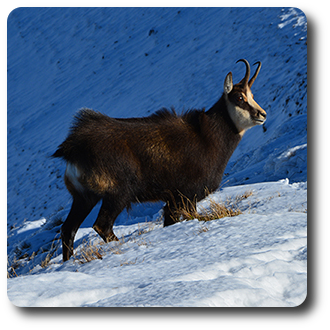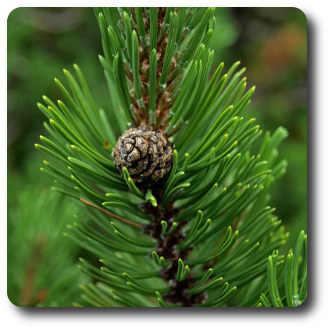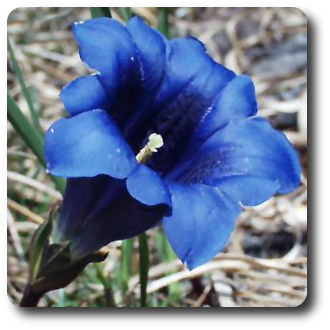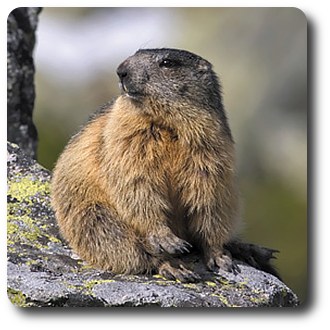SYMBOLIC TATRA FLORA & FAUNA

Kozica – The Tatra chamois (Rupicapra Rupicapra Tatrica) is an endangered subspecies of the chamois of the Rupicapra genus. Tatra chamois lives in the high Tatra Mountains in Slovakia and Poland. Threatened by extinction, the species was artificially introduced in the low Tatra range in 1969. At the turn of the millenium, there was an estimated record low of 160 individuals in the area but protection by national parks in both countries allowed the species to recover in numbers, with a 2014 estimate of around 1,200 individuals surviving in the tough climate and rocky areas where tourist development, poaching and interbreeding with other subspecies pose problems in the effort to maintain the genetic diversity of the chamois.

Szarotka – The Edelweiss (Leontopodium alpinum) prefers rocky limestone and grows at above 1,800 metres (5,900 ft). The dense hair protects the plant from cold and ultraviolet radiation and due to its scarcity, rugged beauty and purity it has become a symbol for alpinism. The flowers bloom from July to September and each bloom consists of five to six small yellow clustered spikelet-florets surrounded by fuzzy white bracts in a double star formation. It can be found on the emblem of the Podhale Rifles; an elite mountain infantry unit of the Polish Army formed in 1918.

Limba – The Arolla Pine Tree (Pinus cembra), a member of the white pine group, typically grows at 1,200 metres (3,900 ft) to 2,300 metres (7,500 ft) above sea level and can reach heights of up to 35 metres (115 ft) with a trunk diameter of up to 1.5 metres (4.9 ft). Resistant to severe cold weather and fungal disease, it grows steadily and has become very valuable to researchers studying rust resistance in these species. The cones, which contain edible nuts, can be up to 8 centimetres long. A species often used in bonsai, it is perfect for carving and was placed on the IUCN Red List of Threatened Species as part of action to conserve biological diversity.

Kosodrzewina – The Mountain Pine (Pinus mugo) is native to high elevation habitats, usually found from 1000 – 2000 metres (3,280 – 7,200 ft), the edge of habitat at which trees are capable of growing. The species often occurs on dolomite limestone, but is in fact indifferent to soil type. Syrup derived from the cones has been used throughout history for medicinal purposes, such as treating cough. The turpentine obtained from the resin of all pines is considered antiseptic and diuretic. Cultivated elsewhere as an ornamental plant, it is also used in garden landscapes and for larger bonsai specimens.

Goryczka Klusjusza – The Clusius Gentian (Gentianae clusii) is a short-stemmed, large-flowered gentian named after Carolus Clusius, one of the earliest botanists to study alpine flora. A species that prefers limestone areas to grow on and can survive all year around. Protected in the Tatra mountains due to a large number of them being picked by tourists, fascinated by its beauty. The plant is valued in cultivation for the unusually intense blue of its blooms and has gained the Royal Horticultural Society’s Award of Garden Merit. A depiction of a gentian flower can be found on the reverse of Austrian 1 cent coin.

Swistak – The Marmot (Marmota marmota latirostris) found in the Tatra mountains is a subspecies of the Alpine Marmot living at altitudes of over 800 metres (2,600 ft) above sea level. This particular breed has a very small population and is considered threatened due to the restricted range where it lives, at higher elevations in a small region of High Tatras. A herbivore that can grow up to 54 cm (21in), it can spend up to three quarters of the year in hibernation and is an excellent digger, capable of penetrating soil that even a pickaxe would have difficulty with.





